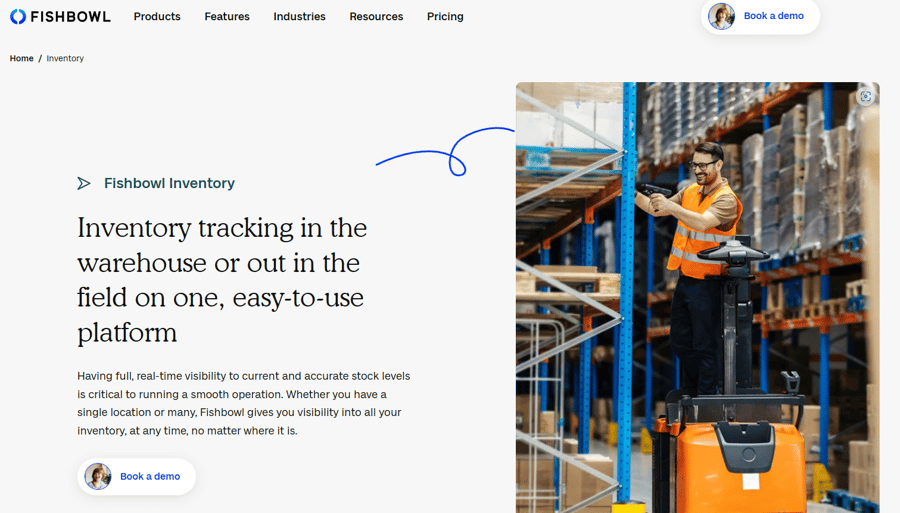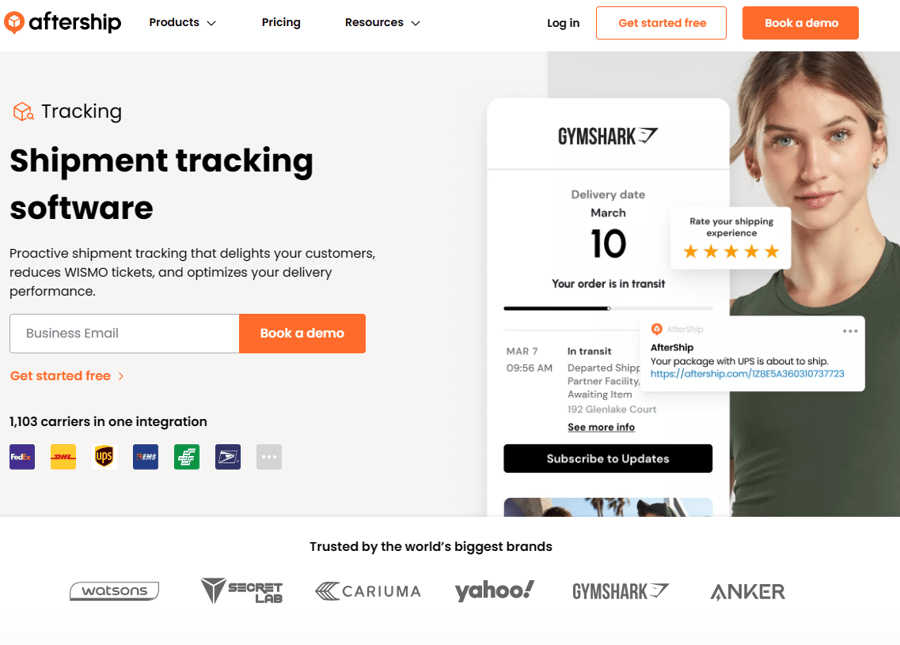
Ensuring smooth eCommerce freight logistics is a challenge for many small to mid-sized businesses (SMBs) that operate globally, often grappling with high shipping costs, complex customs regulations, inventory management, and smooth logistics and visibility throughout the shipping process.
Having a deep understanding and strategic mastery of eCommerce freight is pivotal for SMBs, as it can reduce operational costs and elevate the customer experience by ensuring timely and hassle-free deliveries.
In this article, we’ll delve into SMBs' challenges in eCommerce freight and explore best practices to overcome the hurdles and optimize your business's global shipping operations.
Understanding the Challenges of eCommerce Freight for SMBs
International eCommerce freight can be an entirely different ball game for SMBs when compared to their larger counterparts due to these distinct operational and logistical aspects:
- Shipping Volume and Frequency: Unlike large companies that dispatch products in bulk, SMBs usually deal with smaller volumes and often inconsistent shipping frequencies. For example, an artisanal soap business may only need to ship a couple dozen boxes each week, unlike a large beauty corporation that sends out thousands of items daily.
- Budget Limitations: SMBs with low-volume shipments face disproportionately high shipping prices, significantly impacting their budget. This budget constraint can put SMBs in a challenging position when trying to maintain profitability and competitiveness.
- Smaller Team Size: Large businesses often have dedicated logistics departments overseeing the freight process. In contrast, a small eCommerce startup might only have one or two team members handling everything from inventory management to customer support. This makes it crucial for SMBs to have efficient and easy-to-handle freight systems in place.
- Cost of Failure: The cost of a mishap is high, especially for SMBs. For example, if a custom handmade jewelry store accidentally misroutes a shipment, it might also result in losing the sale and the customer. This is especially critical given that SMBs often rely on repeat customers and positive word-of-mouth for their growth.
4 Challenges SMBs Must Overcome to Master eCommerce Freight
1. High Shipping Costs
A common roadblock small to medium-sized eCommerce businesses face is high shipping costs. Shipping companies treat SMBs as a low priority due to their smaller and less frequent shipping volumes than larger businesses, which are afforded bulk rates.
Freight forwarders can help negotiate lower freight rates, acting as intermediaries between the shipper (you) and the transportation services, leveraging their relationships with carriers to negotiate better prices.
For example, Ship4wd, a digital freight forwarder serving only SMBs, leverages its network to get competitive prices for small businesses. The company, backed by the global shipping company ZIM, also offers 90-day payment deferral and up to $10,000 in credit lines.
By understanding the needs of SMBs, the right freight forwarder can significantly ease the burden of high shipping costs and help you get better quotes from reliable freight providers across the globe.

Source: Ship4wd
2. Navigating Complex Custom Regulations
For eCommerce SMBs, staying informed and adhering to the frequently changing customs and border regulations takes time and effort. Any misstep or deviance from the rules could result in legal troubles, not to mention products being held up at the border or even rejected, leading to delivery delays and a negative customer experience.
An efficient way to navigate these complexities is by seeking a partner to manage customs regulations and identify potential trade restrictions, lessening the hassle of trawling through regulatory documents and websites.
Avalara, a tax compliance solution, can help SMBs run automated workflows to navigate customs regulations.

Source: Avalara
Avalara relies on combining AI and human expertise to address different aspects of customs compliance, such as product classification and calculation of import duties and taxes upfront, making the whole process manageable and less error-prone.
For instance, Avalara's Trade Restrictions Management tool alerts businesses about potential restrictions on their products, preventing cases where items are prohibited from entering certain countries and thus reducing the risk of shipment rejection at borders.
3. Inventory Management
An accurate and efficient inventory management system is pivotal to maintaining customer satisfaction and healthy cash flow. It plays a significant role in avoiding overstocks and understocks, which impact everything from your supply chain efficiency to your business’s bottom line.
However, tracking inventory in real-time, especially for businesses with multiple warehouses, can be daunting. Failure to manage inventory effectively can result in unfulfilled orders, decreased customer satisfaction, and potential revenue loss.
A real-time inventory management solution can be a game-changer in such scenarios, providing complete visibility into your inventory levels. This allows for more efficient stock control, improved cash flow management, enhanced customer satisfaction, and seamless restocking.
Fishbowl, an inventory tracking platform, gives businesses real-time visibility of their stock levels, regardless of the number of their business locations. It offers the flexibility to track items according to what's most important to your business: batch numbers, expiration dates, or any other parameter.

Source: Fishbowl
Additionally, the platform's traceability feature provides system-wide visibility on all parts and tracking data, which can be pivotal in ensuring smooth logistical operations.
4. Tracking Packages Until Delivery
Ensuring the seamless tracking of packages until they reach the customer is crucial to mastering eCommerce freight, particularly for small businesses.
For the business, it provides transparency, allowing for better logistical planning and responsiveness to any delivery issues. For customers, it provides peace of mind, as they can anticipate when their orders will arrive, enhancing the overall customer experience and increasing the likelihood of repeat business.
Mastering this aspect of eCommerce freight can significantly enhance the customer experience, increase customer satisfaction, and ultimately lead to repeat purchases. However, finding an affordable and robust solution that offers this service can be challenging for eCommerce SMBs.
AfterShip, a shipment tracking software, enhances the post-purchase experience for eCommerce businesses and their customers by offering real-time tracking visibility, timely delivery notifications, and automated reporting.

Source: AfterShip
It helps businesses keep their customers updated on their orders in real-time via personalized notifications through multiple channels such as email, SMS, WhatsApp, and Facebook.
AfterShip also features a centralized dashboard, making viewing and filtering all your shipments by various categories easy. This standardizes your shipment statuses and makes comparing tracking data across different carriers a breeze.
Having the right tools is half the battle; knowing how to make the most of them is equally essential. Let’s dive into some best practices to help you get the most value from these tools and your processes.
6 Best Practices for SMBs for Mastering eCommerce Freight
1. Establish Strong Relationships with Freight Forwarders
Firstly, cultivating a good relationship with your freight providers could get you better rates and more flexible terms. This means that by investing time in building these relationships, you could negotiate better prices and save significantly on your shipping costs.
Secondly, strong relationships often translate into priority service. This means that in case of any issues, such as a delay or problem with a shipment, your business will be more likely to receive swift resolution if you have a strong relationship with your freight provider. This can be particularly beneficial in eCommerce, where timeliness and reliability are critical to customer satisfaction.
Building strong relationships with freight providers doesn't happen overnight, but there are a few actionable steps you can take:
- Regular Communication: This will help you stay updated about any changes in services or rates and signal to your freight providers that you value their service.
- Timely Payments: This shows that you are a reliable and trustworthy customer, which can lead to better terms and conditions in the future.
- Feedback: Providing constructive feedback to your freight provider that helps them to improve their service strengthens your relationship with the provider.
- Building Personal Connections: Remembering personal details or asking about their day can go a long way.
2. Plan for Delays
Navigating the complex sphere of eCommerce freight, SMBs often encounter unexpected delays. The reasons can vary from unforeseen weather disruptions and stringent customs regulations to broader global issues such as a pandemic.
Such hold-ups can ripple out, impacting customer satisfaction and your business's image. Hence, it’s pivotal for SMBs to anticipate such scenarios, creating sturdy backup strategies to prepare for these inevitable delays.
Here are a few actionable steps that you can take to plan for potential delays:
- Use conservative delivery estimates: It's better to under-promise and over-deliver than vice versa.
- Diversify carrier relationships: If one carrier experiences delays, you have alternative options to ensure your goods are delivered.
- Maintain transparent communication: Openly keeping your customers informed about delays goes a long way in managing customer expectations and preserving their trust in your business.
- Use contingency planning: This could involve identifying alternative shipping methods, adjusting inventory levels, or temporarily pausing marketing campaigns to manage demand.
3. Ensure Clear Communication with Customers
Transparent interactions with customers build their confidence and preemptively address potential concerns about order status, shipping costs, and delivery delays, helping deliver a positive experience.
To enhance the customer communication process, SMBs should consider the following tips:
- Adopt automated alerts: From acknowledging order receipt to packaging, shipping, and anticipated delivery timeline, customers appreciate being informed at every stage of the process.
- Make shipping expenses visible: Make sure that these fees are conspicuously displayed at checkout to avoid last-minute surprises, which often lead to abandoned carts.
- Notify delays preemptively: When unavoidable hold-ups occur due to customs or other unforeseen circumstances, proactively notify the customers.
- Utilize multi-channel communication: Employ various communication methods such as email, SMS, and social media to reach your customers more effectively.
4. Optimize Packaging
Efficient packaging ensures the product's protection while minimizing its weight and size. This balance is critical to reducing shipping costs and preventing damage during transit.
To achieve optimized packaging, consider the following tips:
- Choose the right-size packaging: Select a box size that comfortably fits the product and requires minimal protective material to secure it.
- Use lightweight filling material: Air pillows or bubble wrap cushion your products without significantly increasing the package's weight.
- Create a unique package design: A well-designed package protects your product and creates a memorable unboxing experience for your customers.
- Consider sustainable packaging: As consumers become more environmentally conscious, eco-friendly packaging can enhance your brand image and appeal to a broader audience.
5. Implement a Clear Returns Policy
A clear returns policy can often be a decisive factor for customers when choosing between different online stores. It can also enhance customer trust and loyalty, helping them feel secure knowing they can return a product if it doesn't meet their expectations.
To implement a clear and effective returns policy, consider the following tips:
- Visibility is key: Including the policy details in the customer's journey, such as in the shopping cart or checkout page, can be a great strategy to keep your customers well-informed.
- Use simple language: Write your returns policy in clear, easy-to-understand language. Avoid using legal jargon that can confuse customers.
- Specify conditions: This includes the time frame for returns, the product's condition, and who covers the return shipping costs. If possible, offer free returns.
- Outline the returns process: Explain how they can initiate a return, how they should package the product, and what steps will follow after the product is returned.
- Frequently review and update as necessary: Consistently adjust and update your returns policy to ensure it continues to meet your business needs and customer expectations.
6. Regularly Review and Adjust Shipping Strategy
It's vital to constantly reassess your shipping processes, considering factors like expenses, delivery speed, and customer feedback to master eCommerce freight. Regular audits highlight potential areas of improvement or inefficiencies that have slipped under the radar.
Here are a few tips to effectively review and adjust your shipping strategy:
- Keep track of key metrics: Identify crucial shipping metrics such as cost per shipment, delivery time, customer satisfaction scores, and the rate of damaged goods.
- Learn from customer feedback: Whether it's an issue with delivery times, packaging, or costs, keep an ear open to their experiences and make necessary adjustments.
- Experiment with different providers: Comparing services, costs, and delivery times can help you find a better fit for your needs.
- Consider seasonal changes: Adjust your shipping strategy to accommodate for peak seasons, considering factors like increased demand or potential weather-related delays.
Wrapping Up
Mastering eCommerce freight logistics is a pivotal factor for the success of any small to mid-sized business operating on a global scale. By partnering with the right service providers and implementing strategic practices, SMBs can overcome these obstacles while optimizing their global shipping operations.
Whether it's understanding the nuances of shipping costs, navigating through complex customs regulations, efficient inventory management, or tracking packages until they reach the customer, every aspect of freight logistics significantly impacts business operations, customer satisfaction, and the bottom line.





Leave a reply or comment below